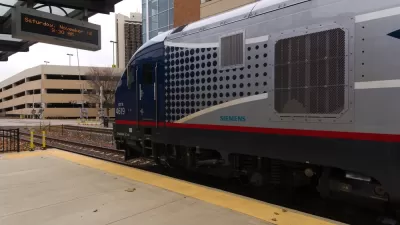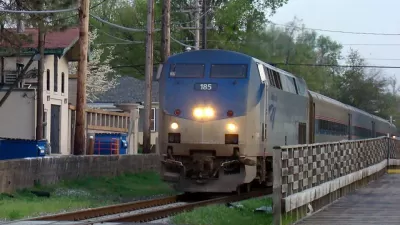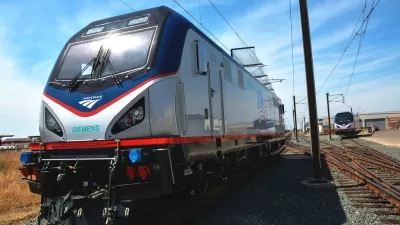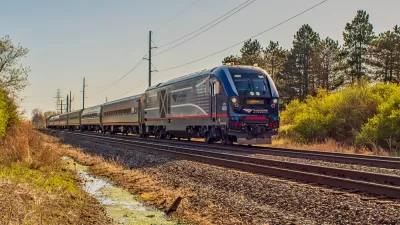Amtrak has final federal approval for train speeds of 110 miles per hour between Joliet and Alton, culminating almost ten years of planning and investing.

Amtrak and the Illinois Department of Transportation (IDOT) have received federal approval for maximum speeds up to 110 mph for most of the Chicago-St. Louis corridor, primarily between the Amtrak stations in Joliet and Alton, according to an Amtrak press release published on May 3. The new top speeds of trains on Lincoln Service and Texas Eagle trains would finally achieve a goal first identified on Planetizen in 2014.
“Until now, 90 mph has been the maximum authorized speed on the tracks owned by Union Pacific Railroad. Amtrak operates Lincoln Service and other trains under a contract with IDOT,” according to the press release.
Additional news coverage of the new top speeds on the route is available in an article by Joey Schneider for Fox 2 Now.
“Amtrak is hopeful the change will reduce times for its Lincoln Service round-trips, which also stop in Quincy and Carbondale, and the Texas Eagle, which runs from Chicago to Dallas with a St. Louis stop,” explains Schneider.
More reading from frequently delayed development of high-speed rail on the Chicago-St. Louis Corridor can be found in the Planetizen archive:
- $102 Million Brings Chicago-St. Louis High Speed Rail a Step Closer (September 2014)
- Faster Chicago to St. Louis Trains Likely to Increase Car Traffic (July 2016)
- Chicago to St. Louis Amtrak Still Not Up to Speed (January 2019)
- Higher Speeds from St. Louis to Chicago Delayed Again for Amtrak (September 2019)
- Amtrak Hits New Top Speeds Between St. Louis and Chicago (December 2021)
FULL STORY: 110 mph Schedules Coming for Amtrak Chicago-St. Louis Corridor

Study: Maui’s Plan to Convert Vacation Rentals to Long-Term Housing Could Cause Nearly $1 Billion Economic Loss
The plan would reduce visitor accommodation by 25,% resulting in 1,900 jobs lost.

North Texas Transit Leaders Tout Benefits of TOD for Growing Region
At a summit focused on transit-oriented development, policymakers discussed how North Texas’ expanded light rail system can serve as a tool for economic growth.

Why Should We Subsidize Public Transportation?
Many public transit agencies face financial stress due to rising costs, declining fare revenue, and declining subsidies. Transit advocates must provide a strong business case for increasing public transit funding.

How to Make US Trains Faster
Changes to boarding platforms and a switch to electric trains could improve U.S. passenger rail service without the added cost of high-speed rail.

Columbia’s Revitalized ‘Loop’ Is a Hub for Local Entrepreneurs
A focus on small businesses is helping a commercial corridor in Columbia, Missouri thrive.

Invasive Insect Threatens Minnesota’s Ash Forests
The Emerald Ash Borer is a rapidly spreading invasive pest threatening Minnesota’s ash trees, and homeowners are encouraged to plant diverse replacement species, avoid moving ash firewood, and monitor for signs of infestation.
Urban Design for Planners 1: Software Tools
This six-course series explores essential urban design concepts using open source software and equips planners with the tools they need to participate fully in the urban design process.
Planning for Universal Design
Learn the tools for implementing Universal Design in planning regulations.
Ascent Environmental
Borough of Carlisle
Institute for Housing and Urban Development Studies (IHS)
City of Grandview
Harvard GSD Executive Education
Toledo-Lucas County Plan Commissions
Salt Lake City
NYU Wagner Graduate School of Public Service





























